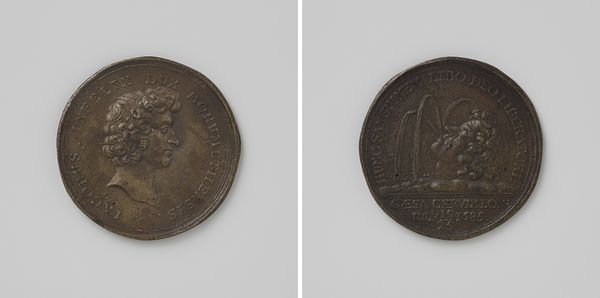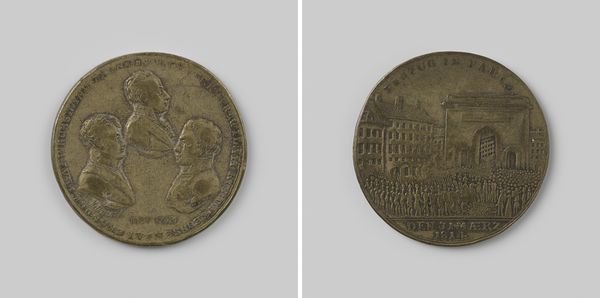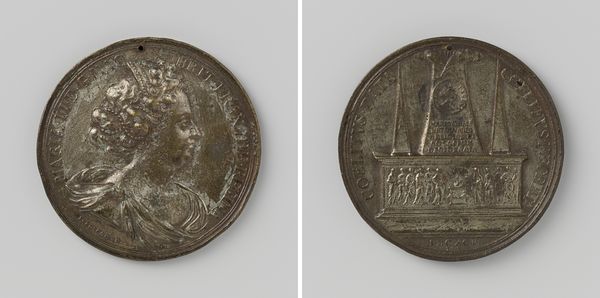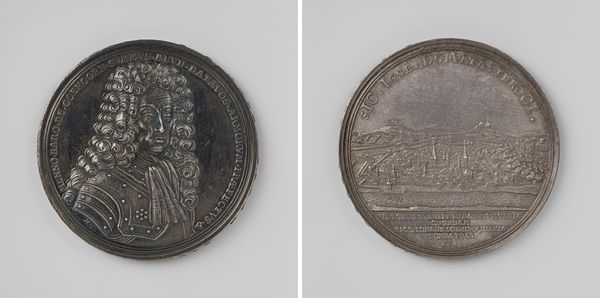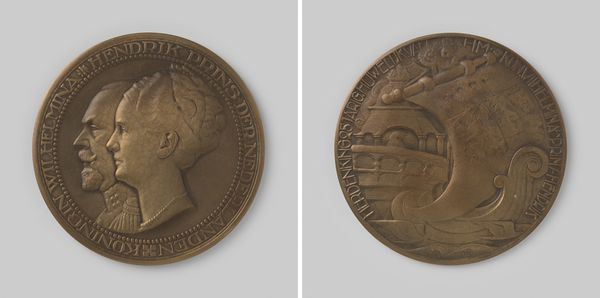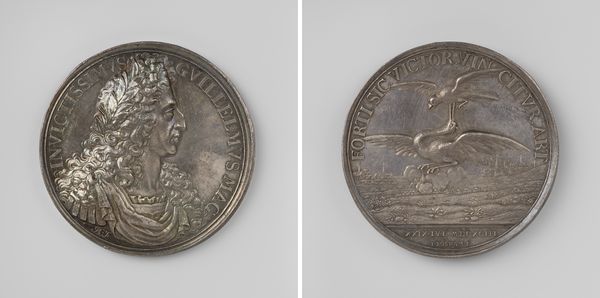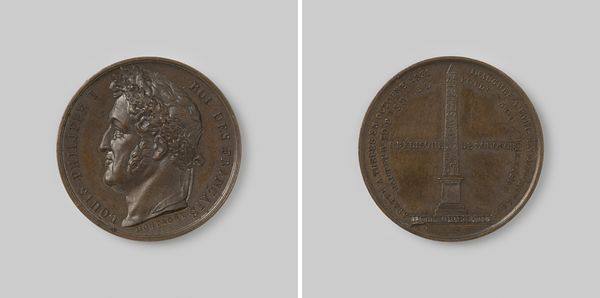
metal, bronze, sculpture
#
baroque
#
metal
#
sculpture
#
bronze
#
sculpture
#
carved
#
history-painting
Dimensions: diameter 3.3 cm, weight 10.64 gr
Copyright: Rijks Museum: Open Domain
Curator: Look at this! It's a bronze medal, “Verovering van Temesvar,” created by Philippe Roettiers in 1716. One side features a profile of Charles VI and on the other, the depiction of the siege itself. Editor: My first thought? This could easily be mistaken for something far older. There's a muted solemnity, a density, that gives it an aura beyond its mere age. The patina really enhances that feeling. Curator: Absolutely. It speaks to the baroque sensibility; a grand commemorative gesture. These medals were very popular then – portable propaganda almost, celebrating victories. The text surrounding the portrait labels Charles VI, Holy Roman Emperor, whilst the opposite side is an ode in Latin. “The enemy yields to the victorious arms of Charles." All in neat concentric circles. Editor: Yes, portable propaganda! But I think that's reductive. To contextualize this piece, one needs to understand Temesvár, a strategically vital city which was under Ottoman rule for nearly two centuries before Charles' victory in 1716. So the medal does much more than just proclaim a conquest, it signifies the shifting power dynamics of early 18th century Europe. Curator: Very true. It's a snapshot of a very particular moment in geopolitics rendered permanent in bronze. Also, I always marvel at the skill involved; such tiny detail worked into a small space. Editor: The ability to inscribe so much narrative and historical weight into such a small object is certainly an exercise in mastery, and worth contemplation from today's perspectives. How are we still shaping objects to tell our stories? What power dynamics are embedded in our contemporary "keepsakes?" Curator: That gives me pause! Seeing this makes me feel connected, and somehow small, knowing events and individuals, now simply recorded like this, echo across so many centuries. Editor: And yet these echoes shape who we are today; examining such works critically illuminates so much about the past, and the present. It forces us to engage with the legacies we have inherited, both celebratory and fraught.
Comments
No comments
Be the first to comment and join the conversation on the ultimate creative platform.
